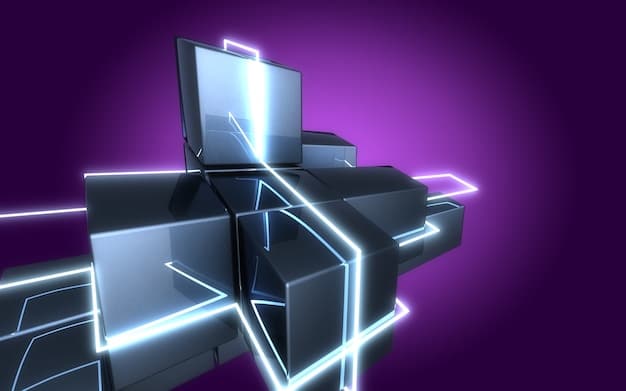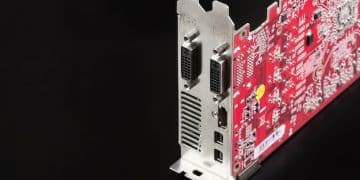AMD SmartAccess Storage: Revolutionizing Game Load Times

AMD SmartAccess Storage leverages DirectStorage technology to drastically reduce game load times, potentially cutting them in half, offering a smoother and more immersive gaming experience.
Tired of endless loading screens? AMD SmartAccess Storage, utilizing DirectStorage, promises to slash game load times by up to 50%, transforming your gaming experience.
Understanding AMD SmartAccess Storage
AMD SmartAccess Storage is a technology designed to accelerate game loading times on PCs equipped with compatible AMD hardware. It works by optimizing the data transfer between the NVMe SSD and the GPU, allowing for faster access to game assets.
This technology is particularly beneficial for modern games that feature large open worlds and high-resolution textures, which can take a significant amount of time to load. By reducing these loading times, SmartAccess Storage aims to provide a more seamless and immersive gaming experience.
The Role of DirectStorage
DirectStorage is a crucial component of SmartAccess Storage. It’s an API developed by Microsoft that allows NVMe SSDs to communicate directly with the GPU, bypassing the CPU for certain data transfers. This direct path significantly reduces latency and increases bandwidth, leading to faster load times.
Benefits of SmartAccess Storage
- Reduced Loading Times: The most significant benefit is the dramatic reduction in game loading times, often by as much as 50%.
- Improved Immersion: Shorter loading times mean less waiting and more time spent actually playing the game.
- Smoother Gameplay: Faster asset streaming can lead to smoother gameplay, especially in open-world environments.
- Enhanced Overall Experience: The combination of these benefits creates a more enjoyable and responsive gaming experience.
In conclusion, AMD SmartAccess Storage, powered by DirectStorage, offers a compelling solution for gamers seeking to minimize loading times and maximize their in-game immersion. It represents a significant step forward in optimizing the data pipeline within gaming PCs.
How AMD SmartAccess Storage Works
The core principle behind AMD SmartAccess Storage is to optimize data flow within the gaming PC. This involves streamlining the communication between the storage device (typically an NVMe SSD) and the graphics card, thus reducing bottlenecks that contribute to longer loading times.
By enabling a more direct pathway for data transfer, SmartAccess Storage bypasses traditional processing constraints, leading to faster and more efficient loading of game assets.

Direct GPU Communication
Traditional storage systems rely on the CPU to manage the transfer of data from the storage device to the GPU. This can create a bottleneck, as the CPU is responsible for many other tasks simultaneously. DirectStorage and, by extension, SmartAccess Storage, allows the NVMe SSD to communicate directly with the GPU, reducing the CPU’s involvement and freeing up resources.
Hardware and Software Synergy
SmartAccess Storage is not solely a hardware or software solution; it’s a combination of both. It requires compatible AMD hardware, including a Ryzen processor, Radeon graphics card, and a fast NVMe SSD, along with software support in the operating system and the game itself.
Ultimately, the technology’s effectiveness depends on seamless integration between all of these elements, ensuring that data can be transferred quickly and efficiently.
In short, AMD SmartAccess Storage optimizes the pathway of data, leading to faster gaming experiences.
Compatible Hardware and Software
To take advantage of AMD SmartAccess Storage, you’ll need specific hardware components that support the technology. In addition to compatible hardware, certain software requirements must also be met. Let’s break it down.
Ensuring that your system meets these requirements facilitates optimal performance improvements and allows you to fully experience the benefits of reduced load times.
Required AMD Hardware
The primary requirements include:
- AMD Ryzen Processor: A relatively modern Ryzen processor is needed to support SmartAccess Storage.
- AMD Radeon GPU: You’ll need a Radeon graphics card that supports DirectStorage and SmartAccess Storage.
- NVMe SSD: A fast NVMe SSD is essential, as it provides the storage speed necessary to benefit from the technology.
Software Requirements
Besides the hardware, the software environment matters too:
- Windows 10 or 11: DirectStorage requires Windows 10 (version 1909 or later) or Windows 11.
- DirectX 12: The game must utilize DirectX 12, as DirectStorage is built upon this API.
- Game Support: The game itself must be programmed to take advantage of DirectStorage. Not all games currently support this technology.
In conclusion, compatibility hinges on meeting both hardware and software criteria to ensure AMD SmartAccess Storage delivers as promised.
The Impact on Game Load Times
The main promise of AMD SmartAccess Storage is a significant reduction in game load times. But how much of a difference does it actually make? Testing and real-world results are beginning paint a clearer picture.
The improvements yielded by SmartAccess Storage may have a profound impact on gaming enjoyment by lessening downtime and expediting access to gameplay.
Testing Results
Initial benchmarks have shown impressive results, with some games loading up to 50% faster with SmartAccess Storage enabled. Certain games have shown improvements ranging from 20% to 50%, which reduces waiting times significantly.
Factors Affecting Performance
Several factors can influence the actual performance gains:
- Game Optimization: How well the game is optimized for DirectStorage plays a significant role.
- SSD Speed: The speed of your NVMe SSD will also impact the loading times.
- System Configuration: Other system components, such as RAM and CPU, can also affect overall performance.
In simple terms, how effectively a game utilizes Directstorage heavily influences the degree of loading-time improvements.
Potential Drawbacks and Limitations
While AMD SmartAccess Storage promises significant improvements in game loading times, it’s essential to recognize its potential drawbacks and limitations. Understanding these factors can help manage expectations and make informed decisions.
A transparent overview balances the discussion and empowers users with a well-rounded perspective of the matter.

Hardware Requirements
The most obvious limitation is the need for compatible AMD hardware. If you don’t have a Ryzen processor, Radeon graphics card, and NVMe SSD, you won’t be able to use SmartAccess Storage.
Furthermore, upgrading to meet those requirements can be costly.
Software Support
Another significant limitation is the need for software support. DirectStorage requires Windows 10 or 11 and the game must be specifically programmed to take advantage of the API.
Real-World Variability
The actual performance gains can vary depending on the game, the speed of your SSD, and other system factors. While some games may see a 50% reduction in load times, others may see a smaller improvement.
In conclusion, it’s prudent to assess both the hardware and software landscape before integrating AMD SmartAccess Storage.
The Future of Gaming with DirectStorage
DirectStorage, the underlying technology behind AMD SmartAccess Storage, represents a significant shift in how games load and stream data. As more games and hardware adopt this technology, it could have a profound impact on the future of gaming.
The potential for elevated efficiency and speed in gaming is undeniable, marking a pivotal advancement. Let’s explore the potential of this technology.
Wider Adoption
As DirectStorage becomes more widely adopted, we can expect to see even greater improvements in game loading times. Developers will have more experience optimizing their games for this technology, and new hardware will be designed to take full advantage of it.
Impact on Game Design
Faster loading times could also influence game design. Developers may be more willing to create larger, more detailed open worlds, knowing that players won’t have to endure long loading screens.
Competition and Innovation
DirectStorage could also spur competition and innovation in the storage market. SSD manufacturers may focus on developing even faster drives to take full advantage of the API, leading to further improvements in game loading times.
In the final analysis, DirectStorage paves the way forward by providing faster loading times and prompting developments in game-creation techniques.
| Key Aspect | Brief Description |
|---|---|
| 🚀 Faster Load Times | Reduces game loading times significantly. |
| ⚙️ DirectStorage Tech | Uses DirectStorage for direct SSD-to-GPU data transfer. |
| 🎮 Game Compatibility | Requires games optimized for DirectStorage. |
| 💻 Hardware Needs | AMD Ryzen CPU, Radeon GPU, and NVMe SSD needed. |
Frequently Asked Questions
▼
AMD SmartAccess Storage is a technology designed to reduce game load times by enabling direct communication between the NVMe SSD and the Radeon GPU, bypassing CPU bottlenecks.
▼
You’ll need an AMD Ryzen processor, a Radeon RX 6000 series or newer GPU, and a fast NVMe SSD to fully utilize AMD SmartAccess Storage.
▼
Load time improvements can vary, but initial benchmarks have shown reductions of up to 50% in some games optimized for DirectStorage.
▼
Support is growing, but check the game’s specifications. Games need to be specifically updated to take advantage of DirectStorage’s capabilities.
▼
While Windows 11 is recommended for the best DirectStorage performance, Windows 10 (version 1909 or later) is also compatible, but may not offer the same level of optimization.
Conclusion
AMD SmartAccess Storage, leveraging the capabilities of DirectStorage, presents a compelling vision for the future of gaming by significantly reducing loading times and paving the way for more immersive and seamless experiences. As more games adopt DirectStorage, the benefits of this technology will only become more pronounced, solidifying its place as a key component in modern gaming PCs.





